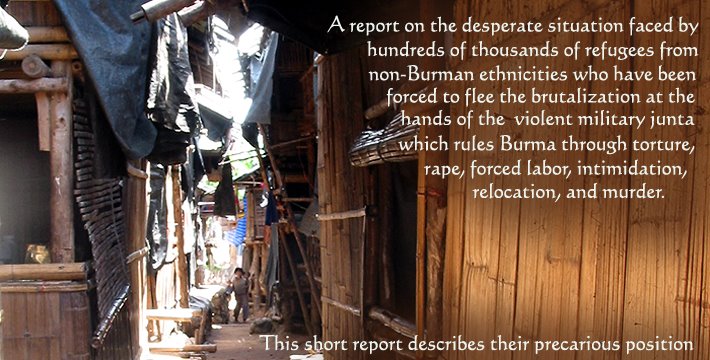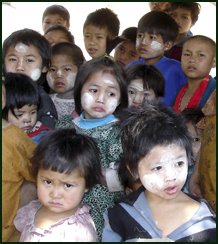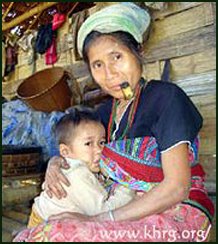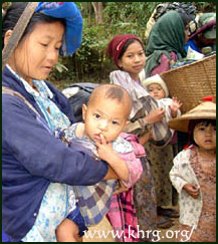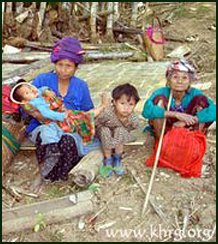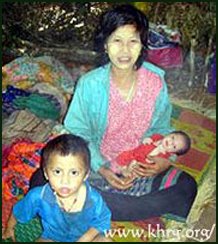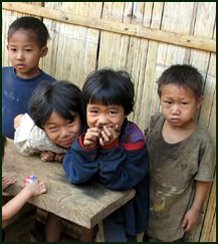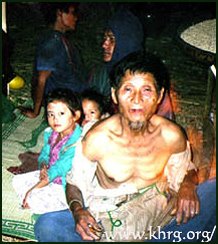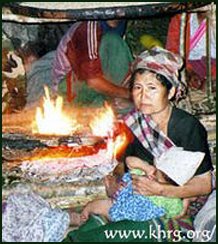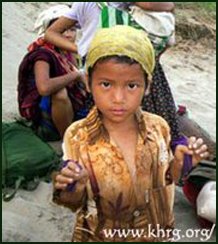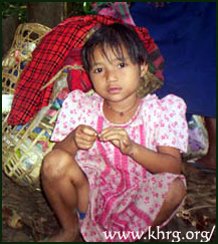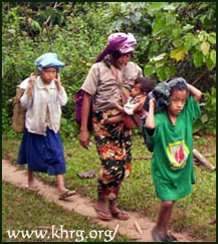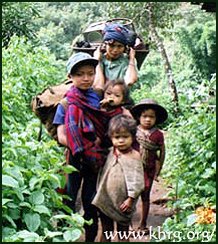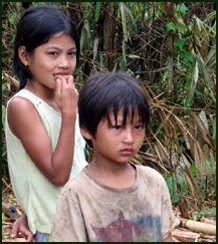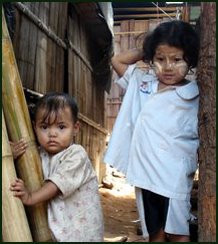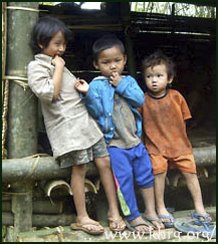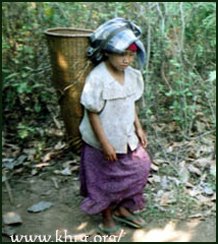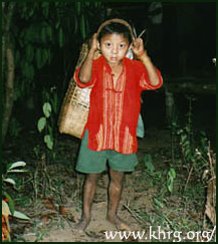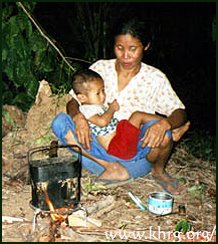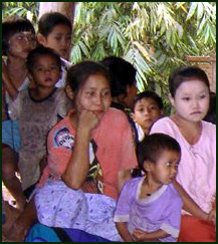Thailand / Burma Border Report
In Burma during the first quarter of 2007, there have been major offensives by the Burma army in Papun and Pa'an districts of central Karen State, targeting positions occupied by the Karen National Liberation Army, the military arm of the Karen National Union. Courage On The Run Courage on the Run from Garrett Morgan on Vimeo.
Many of these positions are strategically located to provide protection to the border camps of Internally Displaced Persons which the Burma army has forced to flee from their villages, and from their hide sites in the jungles to avoid torture, rape, forcrd labor and murder.
The war to deny the non-Burman ethnicities their traditional homelands has raged on for over half a century. They are denied educations and medical care, and often suffer an even higher degree of persecution for their religious beliefs, especially those of the Christian faith.
The government, often accused of ethnic cleansing, has revamped its strategy to use intimidation to force the population into centralized relocation areas where they can be used as beasts of burden. When the Burma army advances near a village, the villagers are forced to flee into the jungle with their children and whatever they can carry. When the army arrives, homes are looted, livestock is confiscated, and what is not taken is destroyed. Homes, schools and churches are burned, and landmines are then placed throughout the village, and along likely approaches to the village.
Those who do not flee are subject to beatings, torture, rape, forced labor, and in many cases...shot on sight. This video slideshow will give the viewer a feel for the brutal persecution they must flee in order to remain free and alive.
Made with actual photos of IDP's from the Karen Human Rights Group (KHRG) archive, it is a fictionalized account of a village being attacked by the Burma army, based on real life attacks by the Burma army which have continued for decades.
A video slideshow depicting the lives of Karen villagers who must flee into the jungle with their families and whatever they can carry on their backs in order to remain free.
The Burma army then allows the jungle to slowly claim more victims through exposure to the elements, malnutrition, and disease. And when the Burma army decides to come back for them, they know where to find them.
There have been countless cases reported of the Burma army's savagely inhumane treatment of women, children and the elderly, as well as ethnic women and girls being taken to army camps, never to be seen again.
The only choices the minorities have is to flee deeper into the forest, to flee towards the land controlled by the ethnic armed factions along the borders, or to become slaves.
Along the Eastern border which Burma shares with Thailand, as well as inland, the Burma army has occupied large areas which have traditionally been the homelands of the non-Burman ethnicities.
In fact, in the past ten years, the State Peace and Development Council (SPDC), the military junta which is in power in Burma, has positioned approximately 40% of its front line troops along Burma's Eastern border.
Then in a tactic reminiscent of Cortez burning his ships after arriving in the New World, the SPDC has cut back on the food rations supplied to its troops, and ordered them to confiscate rice paddies and fruit orchards in order to support its militarization along the border.
The SPDC has also continued to confiscate traditional ethnic farmlands which are then converted to rubber and castor oil plantations, to be worked by forced laborers.
With the increased capacity of the Burma army to search the forests of the occupied areas, those displaced by the military offensives must repeatedly flee, become forced laborers, or suffer atrocities at the hands of the Burma army.
In many cases, the people are first forced to build the roads which will carry more troops into their homelands, forced to carry their ammunition and supplies, then forced to grow food to feed them. All this while their families slowly starve, or die of treatable diseases.
Meanwhile, the world media outlets such as CNN and FOX News simply choose to ignore the situation. WHY?
The military offensives, atrocities, and major displacements have occurred mostly in Shan, Karenni, Mon, and Karen States, as well as in the Tenasserim Division, farther south.
However, all of the non-Burman ethnicities throughout Burma have been targeted by the SPDC regime.
The majority of the Externally Displaced Persons (EDP's) who have fled into Thailand are living in camps located in Mae Hong Son province, and Tak province. In Tak province alone are nearly 85,000 EDP's living in three crowded camps, and in Mae Hong Son province, there are four more camps with over 55,000 refugees.
The efforts of the Non-Governmental Organizations (NGO's) which provide aid to the EDP's, are mainly focused on the Mae Sot area of Tak province, which not only has the highest concentrations of EDP's, but is located across the border from where the heaviest fighting is taking place.
Click on Map for Full Size View
 Due to ceasefire (CF) agreements the SPDC has made with the Democratic Karen Buddhist Army (DKBA), and also with the New Mon State Party (NMSP), there are large CF areas in Southern Karen state, Southern Mon state, and the Northeastern areas of the Tenasserim Division.
Due to ceasefire (CF) agreements the SPDC has made with the Democratic Karen Buddhist Army (DKBA), and also with the New Mon State Party (NMSP), there are large CF areas in Southern Karen state, Southern Mon state, and the Northeastern areas of the Tenasserim Division.
Click on Map for Full Size View
 There are also hide sites, mostly in central Tenasserim, and along the border inside Burma in the areas adjacent to the Thai border town of Suan Phung. And, in Southern Mon State there are several large Mon Resettlement Sites.
There are also hide sites, mostly in central Tenasserim, and along the border inside Burma in the areas adjacent to the Thai border town of Suan Phung. And, in Southern Mon State there are several large Mon Resettlement Sites.
Click Map for Full Size View
 There has been relative calm in these areas of Burma, and the Karen and Mon people who need to get along in the central border areas, have learned how to cooperate with each other, and with the local authorities.
There has been relative calm in these areas of Burma, and the Karen and Mon people who need to get along in the central border areas, have learned how to cooperate with each other, and with the local authorities.
As with the Northern provinces of Thailand, the Kanchanaburi and Ratchaburi provinces of Thailand also have high numbers of Burmese EDP's.
And in the adjacent CF areas of Burma, live thousands more IDP's, who have been driven from their homes to live in CF resettlement areas, and in remote villages which are outside of the current operational reach of the SPDC. These EDP's are mostly from Mon State, Karen State, or Tenasserim.
In Kanchanaburi and Ratchaburi provinces, there are approximately 15,000 refugees who live in the two Thai Government sanctioned camps.
Ban Don Yang camp in Kanchanaburi province has a population of 4,538 residents, and Tham Hin camp in Ratchaburi province, has a population of 9,346 residents.
As with the camps further North, the EDP's living in these two Thai refugee camps have food, shelter, clinics, schools and churches, and even though they face crowded living conditions, and an uncertain future of repatriation, relocation within Thailand, or resettlement to host countries, they are adequately cared for, when compared to the thousands of EDP's who are not living in the Thai camps.
According to the Thailand Burma Border Consortium (TBBC), the SPDC has very few military assets stationed along the border adjacent to Kanchanaburi province along the entire length of Lake Vajiralongkorn.
And other than an Operations Control Headquarters located near the Thai border town of Three Pagodas Pass, it is almost 200 Kilometers between the two nearest SPDC outposts along the border to the North and South of Three Pagodas Pass. This leaves vast stretches of the border up to the DKBA, and NMSP to govern.
Click on Image for Full Size View

Thousands of undocumented EDP's live scattered in the densely jungled mountains of Thailand's Western border with Burma, and in the area of Thailand between the border and Lake Vajiralongkorn.
There are very few roads in these areas, and during the rainy season there are even fewer roads. These EDP's live spartan lives with little or no help from the usual NGO's. And the area is so isolated, that the Thai government seems content to contain them there, and try not to draw too much international attention. Since there is little armed conflict across the border from this region, the UNHCR and the NGO's seem to want to do likewise, which means that very little humanitarian aid reaches the EDP's.
It is likely that these conditions of relative peace and isolation will make the area more and more attractive to those fleeing the fighting. Click Map for Full Size View

However, it should not be overlooked that while there are few SPDC troops along the border to the East of the CF areas, the CF areas are otherwise surrounded on three sides by large concentrations of Burma army blocking forces. This means that should the cease fire agreements be broken by the SPDC, those areas of relative calm could be quickly attacked from three directions.
While further South, below the CF areas in central Tenasserim Division, the Burma army has placed blocking forces between the border and the many relocation sites, which are conveniently near to the castor oil and rubber plantations needing forced laborers.
Admittance into the Thai camps at Ban Don Yang, and Tham Hin, seems to be limited to replacing those who have resettled to host countries. And there has also been talk of relocating the residents of both camps, to a single location. There has also been a recent push which will allow more refugees from among the Thai camps to resettle overseas. The problem is that the present system favors shipping out all of the leaders, the social workers, and those who are educated. This is causing those left behind to be ill-prepared for dealing with the Thai government, and the NGO's.


 So in the final analysis, there are many different aspects to the Burmese refugee situation, and while there is a major aid effort up North to help refugees on both sides of the border, further South where the bullets are not flying there is a great need for humanitarian, and missionary aid.
So in the final analysis, there are many different aspects to the Burmese refugee situation, and while there is a major aid effort up North to help refugees on both sides of the border, further South where the bullets are not flying there is a great need for humanitarian, and missionary aid.
Without sufficient financial backing, it will be difficult to have much impact on those who are deep inside Burma, but there should be an immediate attempt to help those which can be reached along the border in Kanchanaburi and Ratchaburi provinces, and in doing so, make further assessments as to what can be done as soon as possible, to provide aid to the IDP's of Southern Karen and Mon states as well as further south in Tenasserim Division.
Photo and Imagery Credits:
Photos (as marked)........Karen Human Rights Group
Maps.....Thailand Burma Border Consortium
Satellite Imagery..... Google Earth
